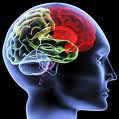In 2011-12, pHLOGISTIX made a business decision to incorporate companion diagnostics (CDx), a growing trend in the pharmaceutical industry because of the emphasis on personalized medicine, into its business strategy. The basis for this was the growing public awareness of the impact of concussion in everyday life. It emanated from the explosion in lawsuits against the National Football League (NFL) by former NFL players to the situation that high school athletics departments and parents encounter with their children, girls as well as boys, suffering concussions from other sports such as basketball, volleyball, soccer as well as football and hockey (see Blog and pHLOGISTIX News).
In making this decision, the Company sought to develop a translational CDx team to develop experience in launching diagnostic products; one with experience in drafting and submitting regulatory filings of Premarket Notification (510k)and Premarket Approvals (PMAs). There are no existing diagnostic technologies that are well proven and widely accepted for a CDx for concussion currently available. Our decision was partially based on the experience of in-house and collaborative external CDx team members.
There were at least six types of diagnostics we might include as potential CDx for concussion:
1) CDx to identify responsive or non-responsive patients to our therapeutic following a concussion;
2) CDx that would identify subgroups of the wider TBI population with poor prognosis;
3) CDx that would capture patients falling into the post-concussion syndrome (PCS) category;
4) Monitoring response to our therapeutic to adjust treatment schedule, dose, etc. and to achieve improved efficacy;
5) CDx to individualize therapeutic dose;
6) CDx to monitor efficacy of therapeutic in clinical trials to support market approval of our product; and also CDx likely to identify patients at increased risk of serious adverse events (SAEs) stemming from treatment with our therapeutic.
Since then, pHLOGISTIX has embarked on a program to develop blood-based biomarkers to detect concussion resulting in CDx with high accuracy and validity. These biomarkers are to firmly establish that concussion, and the transition to PCS, has taken place, but also to enable both medically trained and untrained personnel, such as team trainers and others, to make decisions relative to a victim reentering the trauma-inducing venue. These biomarkers will also serve to monitor therapeutic efficacy, and in this sense will become part of a growing pharma category known as “theranostics”. Theranostics can be tied to a specific drug or biologic assay/drug-diagnostic combination or can provide critical information determining dosage or continued use of such therapeutics.
